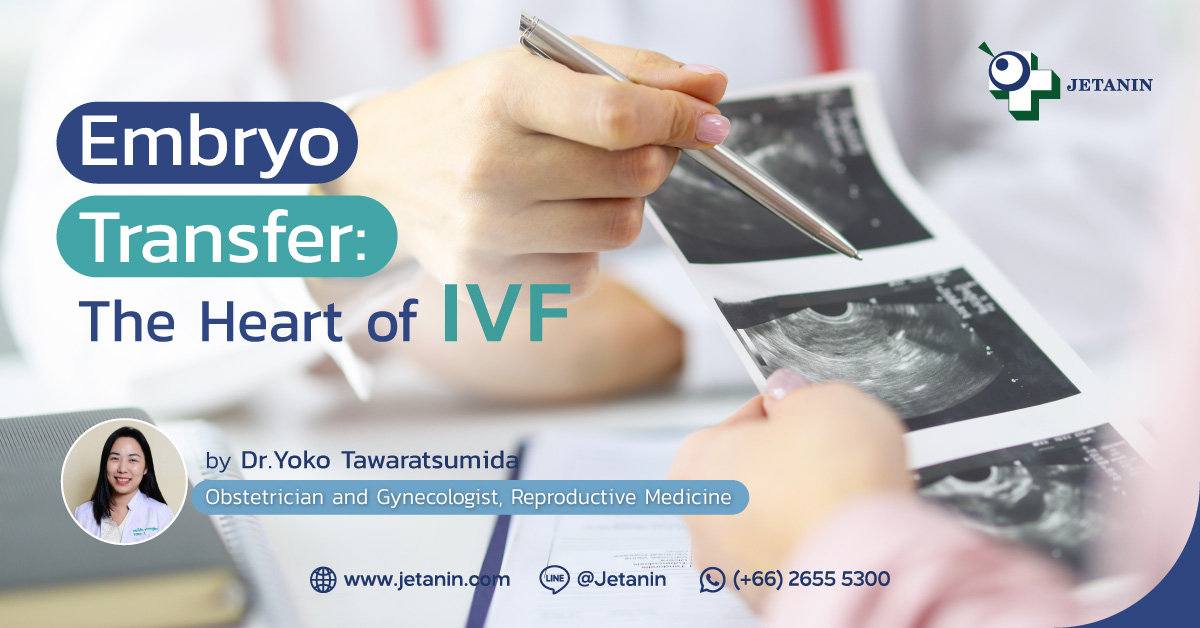
Embryo transfer is the last and the most important step of the IVF process. Good planning and preparations help to increase the successful embryo transfer. Preparations can be done as follows:
Pre-Transfer Phase
1.The receptivity of the endometrium is evaluated prior to the embryo transfer, mostly by an ultrasound scan. Endometrium appropriate for the implantation must be over 8 mm thick and have a triple-line pattern. If the ultrasound scan suggests any suspicious abnormalities in the uterus which may affect the implantation such as polyps, fibroids, or Asherman syndrome (adhesion in the uterus), etc., If the abnormalities are confirmed to be problematic, the patient may need to undergo surgery before the embryo transfer.
2.The best embryo is selected for the transfer. Generally, the pre-transfer embryos have several stages of development as follows:
Day1 : 2PN Stage
Day 2-3 : Cleavage Stage. It is when the embryos start to divide into 2-10 cells.
Day 4 : Morula Stage. The cells are multiplied in cluster that is hard to count individually.
Day 5 : Blastocyst Stage. It is the last stage of development before the implantation. The embryo hatches from its shell and is ready to attach to the endometrium. Therefore, selecting the embryo that has developed to a blastocyst will result in a better success rate than other stages.
Post-Transfer Phase
1.The patient is required to strictly take prescribed medication, especially those who took hormone pills to prepare the endometrium. Normally, a natural pregnancy relies on the hormones secreted by the uterus, while a pregnancy with hormone-induced endometrium preparations cannot force the uterus to secret such hormones. Therefore, the hormones needed to maintain the pregnancy can only be obtained from the medication. Failure to follow the given prescription may result in pregnancy loss.
2.The patient can do routines as usual. Studies reveal that staying still in bed all the time does not increase the chance of a pregnancy. After the embryo transfer, you can do your daily life normally, for instance
2.1. Properly body movement such as avoid going up and down the stairs. Avoid walking all the time and standing for long periods of time. However, it does not mean that the mother should remain in bed all the time.
2.2 Having normal nutritious food are recommended. It should be a fiber-rich and easily digestible food. Avoid having a raw or semi-cooked meal to prevent a constipation or diarrhea.
If you have any unusual symptoms, you should consult your doctor immediately. Well planning and strictly follow the doctor recommendation can help to increase the chance of success for the embryo transfer.
Written by
Dr.Yoko Tawaratsumida
Obstetrician and Gynecologist, Reproductive Medicine
